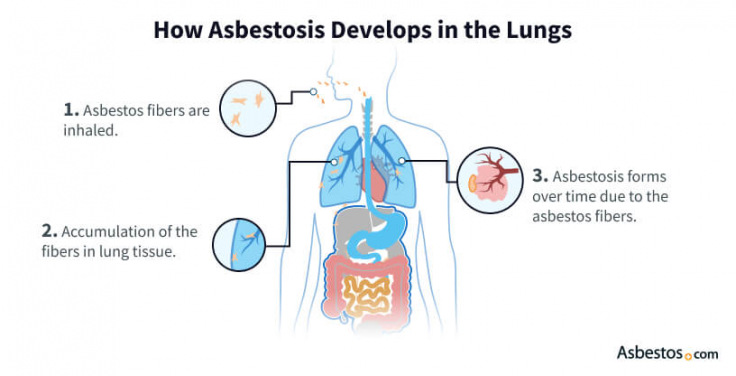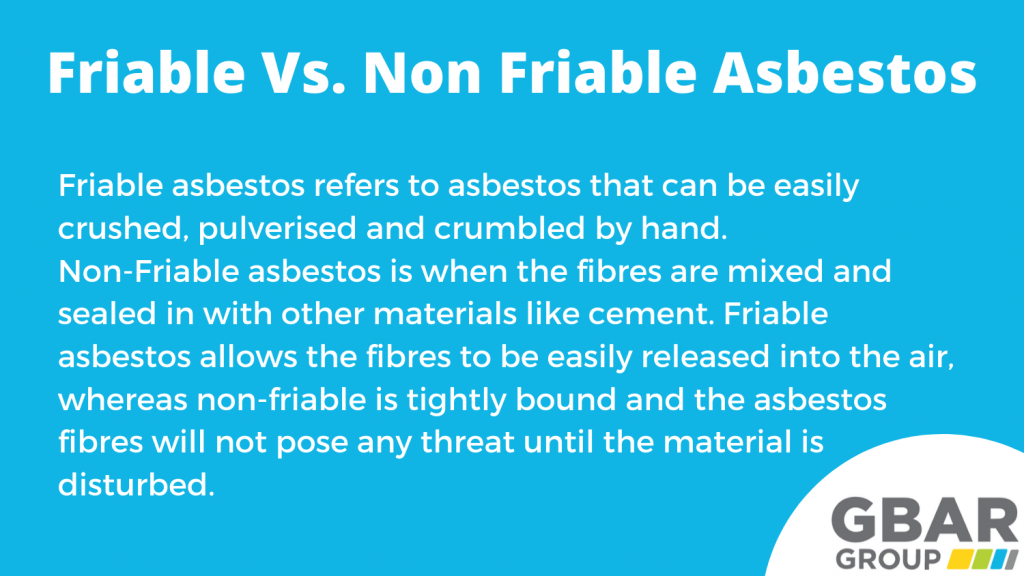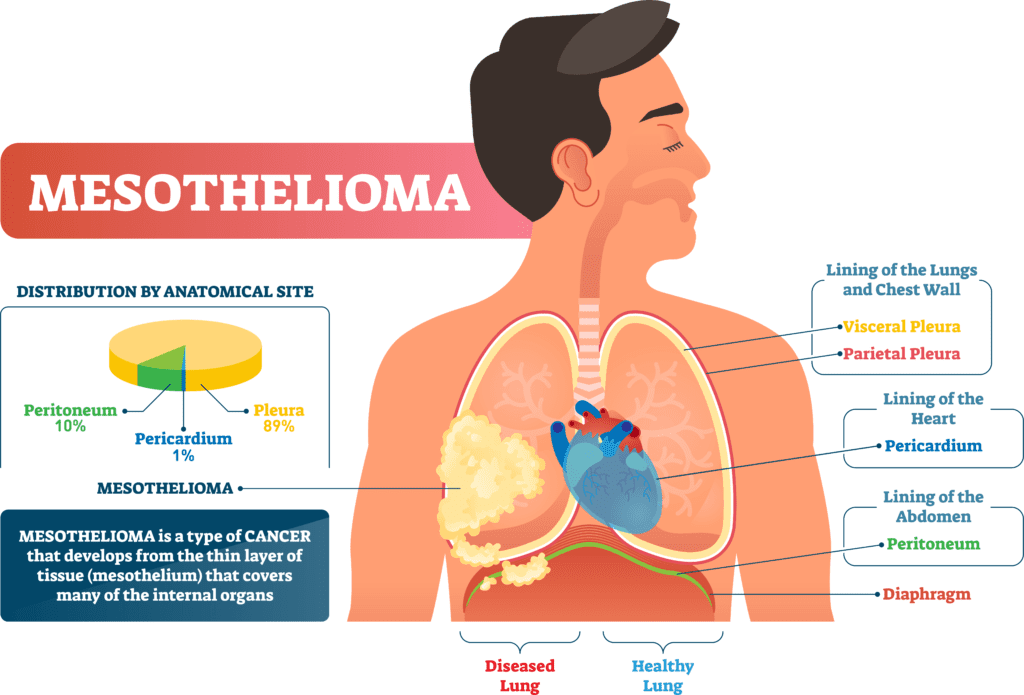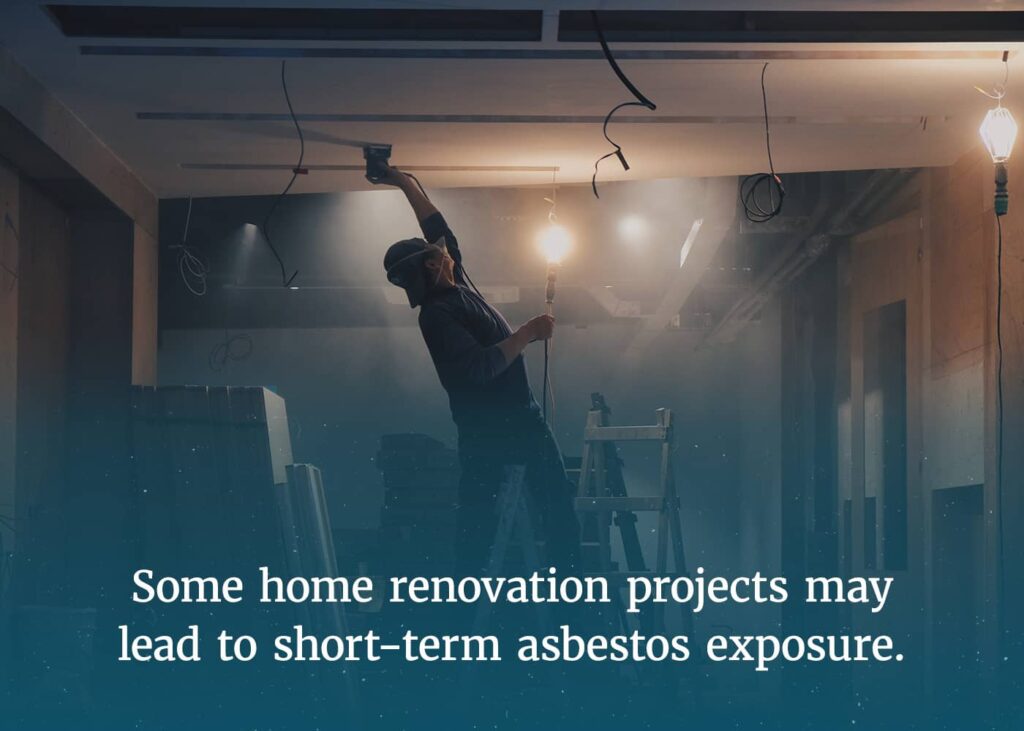Asbestos, a mineral known for its heat resistance and durability, has been widely used in construction materials for decades. However, its microscopic fibers can cause severe health issues, including lung cancer and mesothelioma. If you have been diagnosed with asbestos-related diseases, you may be wondering if there is a cure. While there is currently no known cure for asbestos-related diseases, medical advancements and treatment options can help manage symptoms and improve the quality of life for patients. In this article, we will explore the latest developments in asbestos treatment and the various approaches to managing the effects of exposure.
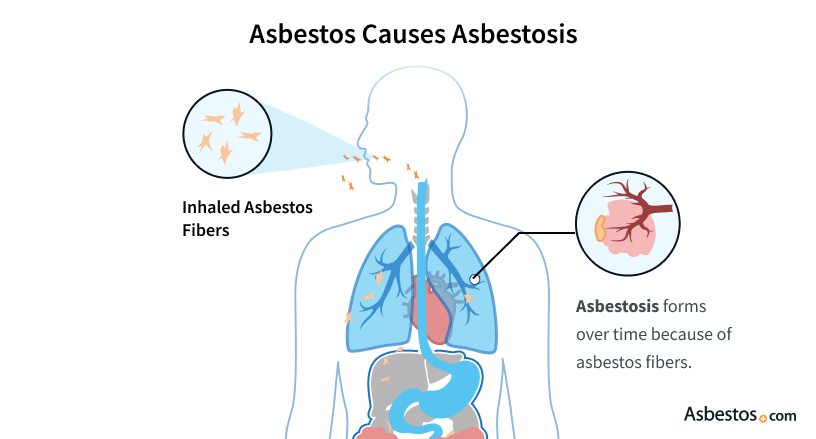

I. Understanding Asbestos
A. What is Asbestos?
Asbestos is a naturally occurring mineral that was once widely used in various industries due to its heat resistance and durability. It was commonly used in construction materials such as insulation, roofing, and fireproofing products. Asbestos has unique fibrous properties that make it resistant to heat and chemicals, but these same properties can also be extremely harmful when inhaled or ingested.
B. Causes and Risks of Asbestos Exposure
Exposure to asbestos occurs when the tiny asbestos fibers become airborne and are inhaled or ingested into the body. The main cause of asbestos-related diseases is long-term exposure to these harmful fibers. Occupations such as mining, construction, demolition, and manufacturing have a higher risk of asbestos exposure, as workers may come into contact with asbestos-containing materials without proper safety precautions. Even brief exposure to asbestos can pose a risk, as the fibers can remain in the body for a long time and cause damage over time.
II. Diagnosing Asbestos-related Diseases
A. Recognizing Symptoms
The symptoms of asbestos-related diseases, such as asbestosis, lung cancer, and mesothelioma, may take several years or even decades to appear. This makes early diagnosis challenging, as the symptoms often mimic other respiratory or lung conditions. Common symptoms include persistent cough, shortness of breath, chest pain, fatigue, and unintentional weight loss. If you have a history of asbestos exposure or suspect you may have been exposed, it is important to inform your healthcare provider to ensure timely and accurate diagnosis.
B. Medical Tests and Procedures
To diagnose asbestos-related diseases, various medical tests and procedures may be used. These can include imaging tests such as X-rays, CT scans, and MRIs to detect abnormalities in the lungs or other affected areas. Pulmonary function tests may also be conducted to assess lung capacity and function. In some cases, a biopsy may be necessary to confirm the presence of asbestos fibers or the specific type of asbestos-related disease.
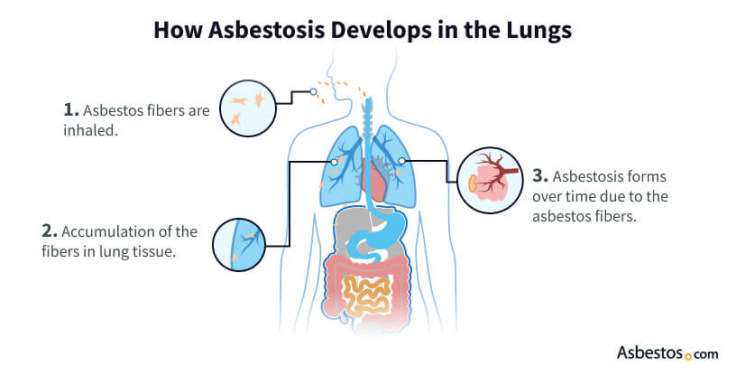

III. Treatments for Asbestos-related Diseases
A. Asbestosis Treatments
Asbestosis, a chronic lung condition caused by long-term exposure to asbestos, has no cure. However, various treatments can help manage symptoms and improve quality of life. Treatment options include medication to alleviate symptoms such as coughing and shortness of breath, pulmonary rehabilitation programs to improve lung function, and oxygen therapy to ensure adequate oxygen supply. Smoking cessation is also crucial for individuals with asbestosis, as smoking further damages the lungs.
B. Mesothelioma Treatments
Mesothelioma, a rare and aggressive form of cancer caused by asbestos exposure, can be challenging to treat. The treatment approach depends on various factors, including the stage and location of the disease. Treatments may include surgery to remove tumors, chemotherapy to kill cancer cells, radiation therapy to target cancerous cells, and targeted therapy to attack specific genetic abnormalities in the cancer cells.
C. Lung Cancer Treatments
Lung cancer caused by asbestos exposure is typically treated similarly to lung cancer caused by other factors, such as smoking. Treatment options may include surgery to remove tumors, chemotherapy, radiation therapy, immunotherapy, and targeted therapy. The specific treatment plan will depend on the type and stage of lung cancer, as well as the overall health and preferences of the patient.
D. Other Asbestos-related Disease Treatments
In addition to asbestosis, mesothelioma, and lung cancer, asbestos exposure can also lead to other diseases such as pleural plaques, pleural effusion, and pleural thickening. Treatment for these conditions may involve addressing the specific symptoms and complications present. This can include medication to manage pain and inflammation, drainage procedures to alleviate fluid buildup, and in some cases, surgery to remove thickened or damaged tissues.
IV. Palliative Care and Supportive Therapies
A. Managing Symptoms and Improving Quality of Life
For individuals with asbestos-related diseases, managing symptoms and improving quality of life are crucial aspects of care. Palliative care focuses on relieving pain, managing symptoms, and providing emotional support. Medications may be prescribed to address pain, shortness of breath, and other symptoms. Breathing exercises, physical therapy, and occupational therapy can also play a role in improving overall well-being and functionality.
B. Psychological Support and Counseling
Receiving a diagnosis of an asbestos-related disease can be emotionally overwhelming for both patients and their loved ones. Psychological support and counseling play a vital role in helping individuals cope with their diagnosis, manage anxiety and depression, and improve overall mental well-being. Support groups and therapy sessions can provide a safe space for individuals to share their experiences and receive guidance from others who are facing similar challenges.
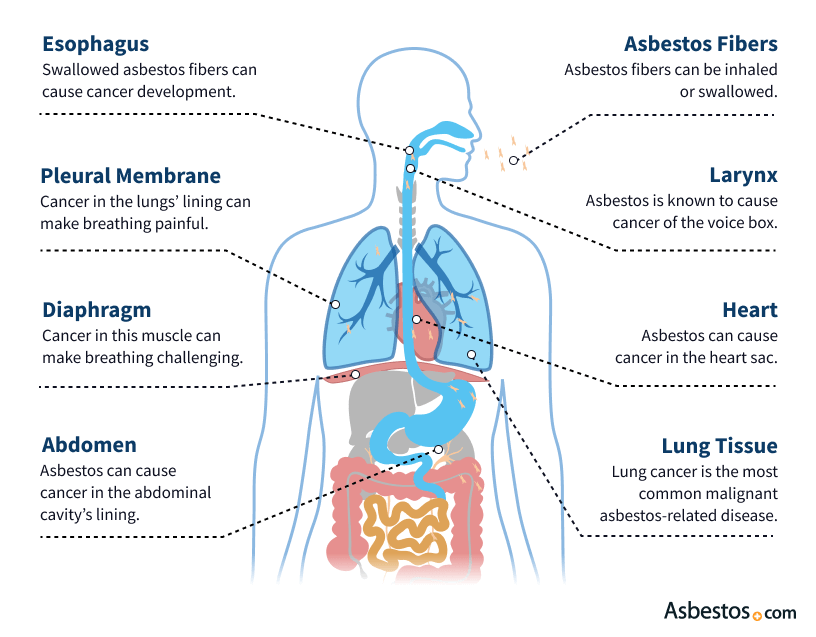

V. Experimental and Emerging Treatments
A. Immunotherapy
Immunotherapy, also known as biologic therapy, is an innovative treatment approach that harnesses the body’s immune system to fight cancer. This form of treatment has shown promising results in some patients with asbestos-related cancers, such as mesothelioma. Immunotherapy drugs work by boosting the immune system’s ability to recognize and target cancer cells. While still considered experimental, ongoing research and clinical trials are investigating the potential of immunotherapy as a viable treatment option for asbestos-related diseases.
B. Targeted Therapy
Targeted therapy is a type of treatment that specifically targets the genetic abnormalities present in cancer cells. This approach aims to block the growth and spread of cancer cells while minimizing damage to healthy cells. In some cases, targeted therapy has shown promise in treating certain types of asbestos-related cancers. However, further research is needed to determine its efficacy and long-term benefits.
C. Gene Therapy
Gene therapy is an emerging field that aims to treat diseases by modifying or replacing faulty genes in the body. Although still in the early stages of development, gene therapy holds potential for the treatment of asbestos-related diseases. By targeting and repairing damaged genes affected by asbestos exposure, gene therapy may offer new avenues for treatment and potentially reverse disease progression. However, more research and clinical trials are necessary before gene therapy becomes a widely available treatment option.
D. Clinical Trials
Clinical trials are critical for advancing medical knowledge and exploring new treatment options for asbestos-related diseases. These trials evaluate the safety and efficacy of experimental treatments and therapies. By participating in clinical trials, patients may have access to cutting-edge treatments not yet available to the general public. However, it is important to carefully consider the potential risks and benefits of participating in a clinical trial and consult with healthcare professionals before making a decision.
VI. Legal and Compensation Issues
A. Legal Rights and Responsibility
When diagnosed with asbestos-related diseases, understanding legal rights and responsibilities is essential. Lawsuits and legal actions may be pursued against responsible parties, such as manufacturers, employers, or property owners, who knowingly exposed individuals to asbestos without proper precautions or warnings. It is important to consult with legal professionals experienced in asbestos-related cases to navigate the complex legal landscape and potentially seek compensation for medical expenses, lost wages, and other damages.
B. Asbestos Trust Funds
As a result of numerous asbestos-related lawsuits, some companies that used asbestos in their products have established trust funds to compensate victims of asbestos exposure. These trust funds provide financial assistance to individuals diagnosed with asbestos-related diseases, even if the responsible company has filed for bankruptcy. It is advisable to consult with legal professionals to navigate the process of filing claims and accessing these trust funds.
C. Workers’ Compensation
Workers’ compensation is a form of insurance that provides benefits to employees who have been injured or become ill as a result of their work. This includes individuals diagnosed with asbestos-related diseases who can establish a link between their condition and occupational asbestos exposure. Workers’ compensation can provide financial support for medical expenses, lost wages, rehabilitation costs, and disability benefits. It is important to understand the specific requirements and procedures involved in filing a workers’ compensation claim.
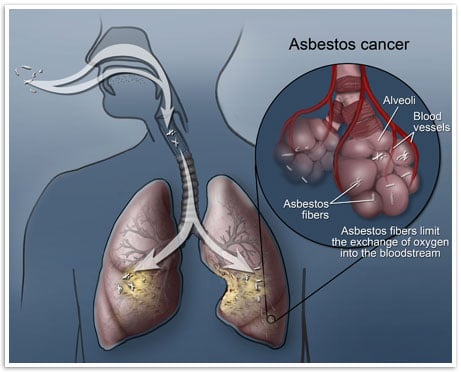

VII. Prevention and Risk Reduction
A. Occupational Safety Measures
Preventing asbestos exposure is essential to reduce the risk of asbestos-related diseases. Occupational safety measures, such as using appropriate protective equipment (e.g., masks, gloves), implementing proper ventilation systems, and following safe work practices, are crucial for workers in industries where asbestos exposure is a potential hazard. Employers should prioritize employee safety and provide regular training on asbestos awareness and handling procedures.
B. Removal and Proper Disposal of Asbestos
When asbestos-containing materials need to be removed from buildings or structures, it is important to follow proper removal and disposal procedures. This should be done by trained professionals who adhere to local regulations and guidelines. Removing asbestos improperly can lead to the release of harmful fibers into the air, increasing the risk of exposure for both workers and occupants of the building.
C. Public Health Education and Awareness
Raising public health education and awareness about the dangers of asbestos is crucial for preventing asbestos-related diseases. Governments, organizations, and healthcare professionals should collaborate to provide accurate information about asbestos, its risks, and safe handling precautions. Educating the general public about the importance of proper asbestos management and the potential health risks associated with exposure can help prevent future cases of asbestos-related diseases.
VIII. Can Asbestos-Related Diseases be Cured?
A. Complete and Permanent Cure
Currently, there is no complete and permanent cure for asbestos-related diseases. Many of these diseases, such as mesothelioma, are aggressive and difficult to treat. However, advancements in medical research and emerging treatment options offer hope for improved outcomes and increased survival rates. Early detection, timely treatment, and ongoing research are key factors in enhancing the chances of successful management and prolonged survival.
B. Slowing Disease Progression
While a complete cure may not be achievable, treatments for asbestos-related diseases can help slow down disease progression. By managing symptoms, utilizing appropriate therapies, and adopting healthy lifestyle changes, individuals can potentially delay the advancement of their disease and improve their overall quality of life. Regular monitoring and follow-up with healthcare professionals is crucial to assess disease progression and adjust treatment plans accordingly.
C. Improving Quality of Life
While a cure remains elusive, the focus of treatment for asbestos-related diseases is to improve the quality of life for affected individuals. Palliative care, supportive therapies, and pain management techniques can contribute to reducing symptoms and enhancing overall well-being. Additionally, psychological support and counseling play an integral role in helping patients cope with the emotional impact of their disease and maintain a positive outlook on life.


IX. Early Detection and Timely Treatment
A. Importance of Early Diagnosis
Early diagnosis plays a significant role in improving treatment outcomes for asbestos-related diseases. Due to the long latency period and non-specific symptoms, diagnosis often occurs at advanced stages when treatment options may be limited. Regular health check-ups, especially for individuals with a history of asbestos exposure, can facilitate early detection and timely intervention. Awareness of the potential risks, understanding symptoms, and immediate reporting to healthcare providers are key elements in achieving early diagnosis.
B. Prognosis and Survival Rates
Prognosis and survival rates for asbestos-related diseases vary depending on factors such as the specific disease, stage at diagnosis, overall health of the patient, and treatment effectiveness. Mesothelioma, for example, typically has a lower survival rate due to its aggressive nature and often late-stage diagnosis. However, advancements in treatment and emerging therapies offer hope for improved survival rates in the future. It is important to consult with healthcare professionals for personalized information and prognosis related to individual cases.
X. Conclusion
Asbestos-related diseases pose significant health risks due to exposure to harmful asbestos fibers. While a complete cure for these diseases is currently unavailable, various treatment options exist to manage symptoms, slow disease progression, and improve the overall quality of life for affected individuals. Early detection, timely treatment, and ongoing research are key factors in enhancing outcomes and increasing survival rates. By prioritizing prevention, raising awareness, and advocating for legal rights, we can collectively work towards reducing the incidence of asbestos-related diseases and improving the well-being of those affected.

